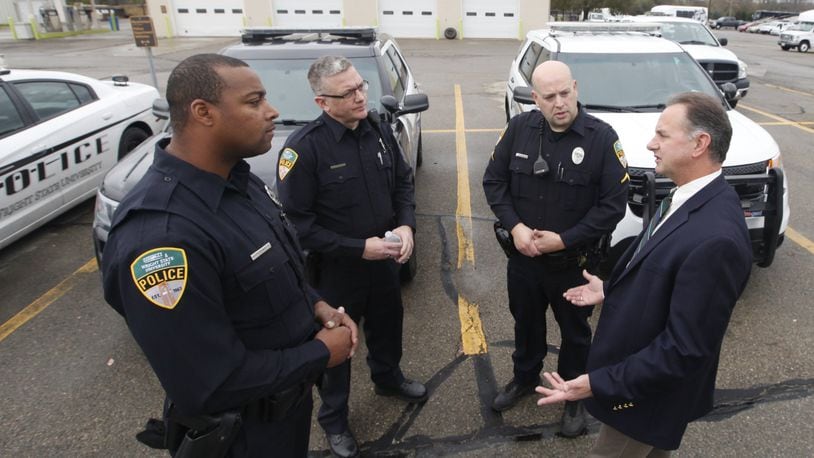Responding alone, OSU campus police officer Alan Horujko, a Fairfield native, shot and killed a knife-wielding man identified as Abdul Razak Ali Artan Monday morning after the Somali refugee struck pedestrians with his car and stabbed others.
“After Columbine it was determined that you can’t just stand by and wait for SWAT (Special Weapons and Tactics) while there’s an active situation occurring. That changed,” said Charles J. Gift, Sinclair Community College’s director of public safety and police chief. “If one shows up and they’re by themselves they are going to take immediate action. The main mission of the police is to stop the threat.”
But taking down a suspect well into a melee means those injured or dying will be a secondary concern until the threat is eliminated, said David A. Finnie, Wright State University’s police chief.
“Our mindset is to go ahead and locate, isolate and stop the threat,” Finnie said.
Although Monday’s attack resulted in injuries to 11 people, none of the injuries were considered life-threatening. Rescue personnel were able to quickly transport the injured to area hospitals.
Gift said police and fire departments have worked together on efforts to move in with rescue teams as soon as possible.
“Up until the last couple of years the fire departments would not be able to enter until they had a clear zone,” he said. “Now that’s changed and they will enter into a warm zone escorted by police officers and provide treatment which will help save lives.”
Part of saving lives when the unthinkable occurs is alerting students, which can be a challenge on a sprawling university campus.
Universities employ the latest technology to spread the word on “multiple channels,” said Seth Bauguess, Wright State University director of communications.
At Wright State, an email immediately goes to about 30,000 WSU students, faculty and staff, Bauguess said. On Monday, the university sent out a reminder that the university also offers text and voice alerts that are distributed to those who sign up. Wright State brought in extra officers Monday after news of the OSU attack spread.
At Ohio State, thousands of students, faculty and staff received Buckeye Alert notices beginning at 9:55 a.m. Monday. The second notice a minute later alerted the OSU community to an active shooter at Watts Hall with the message, “Run, Hide, Fight.” The attacker, it was later learned, did not have a gun.
“Run, Hide, Fight” is an active violence protocol developed by the U.S. Department of Homeland Security. Under the protocol, people in the face of a threat should find an escape route if possible, leave their belongings behind, silence their phones and hide in an area out of the shooter’s view. You should attempt to disarm or engage the attacker only when you feel your life is in danger, according to the guidelines.
Sinclair has a variety of methods for getting the word out to students, faculty, staff and visitors, including emails, text messages and a network of 1,500 emergency alarm loudspeakers. The loudspeakers are spread throughout the Dayton campus, including in garage areas and parking lots.
A video on Sinclair’s website helps outline a four-step plan if confronted by an active shooter: get out, call out, hide out, and take out,” Gift said.
“If you can, get out of the building where you’re at and get away,” he said. “Once you do, call police. Don’t think someone else is going to do it and they may not and we need to know. The sooner we know about it the sooner we can get there to stop it.”
Both Sinclair and WSU police take part in active shooter drills as well as provide classes for students, faculty and staff, police officials said.
According to the University of Dayton’s website, police there have also received specialized training to respond to violent attacks.
“Incidents of violence in workplaces, high schools, colleges, and universities have elevated safety concerns to a level never before experienced in the United States,” the website says.
WSU’s Finnie, who has been in law enforcement for 29 years, said campus police officers today must “expect the unexpected.”
“Things that we didn’t have to deal with in the ’80s and ’90s and maybe even the 2000s, now that we are coming up on 2017 we’re seeing things change over the decades,” he said. “And police work and the philosophy or the paradigm of policing has to change with the events.”
About the Author
